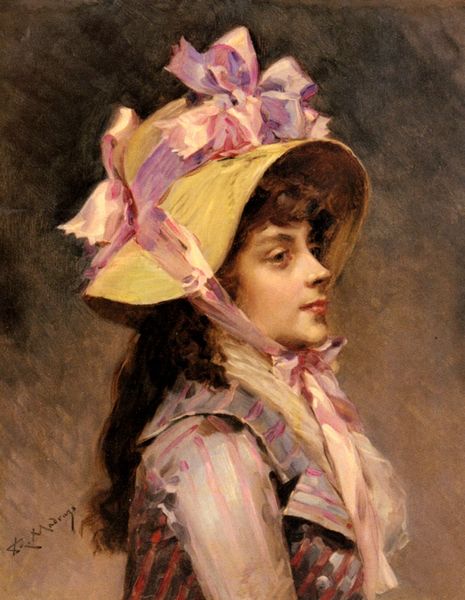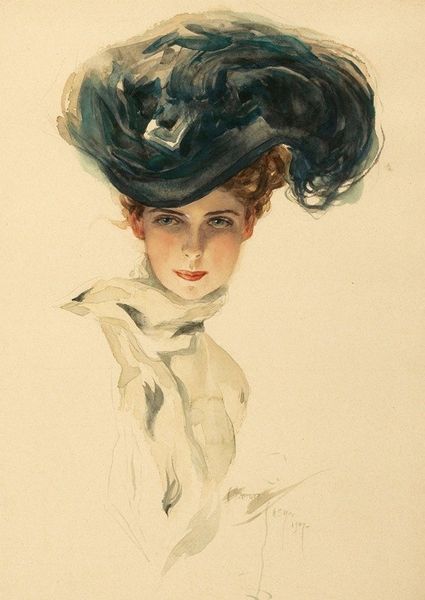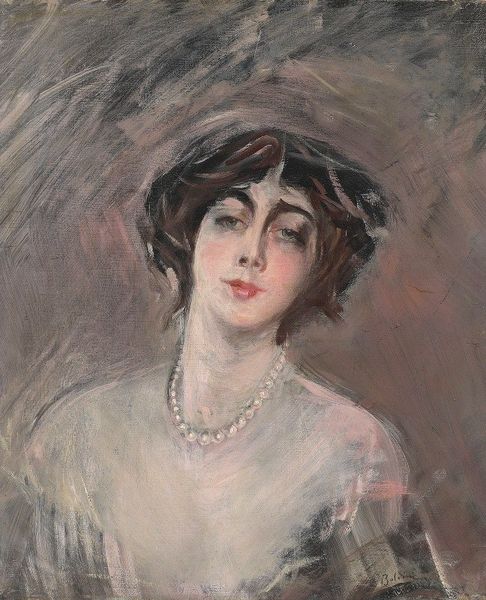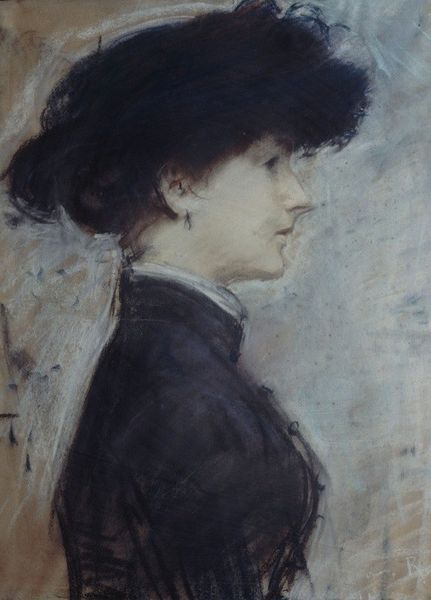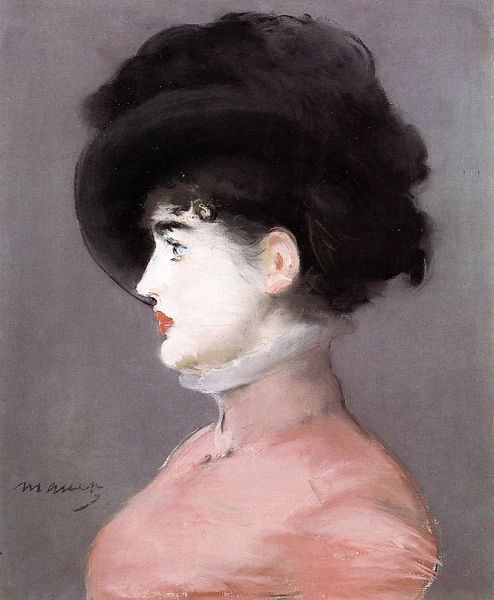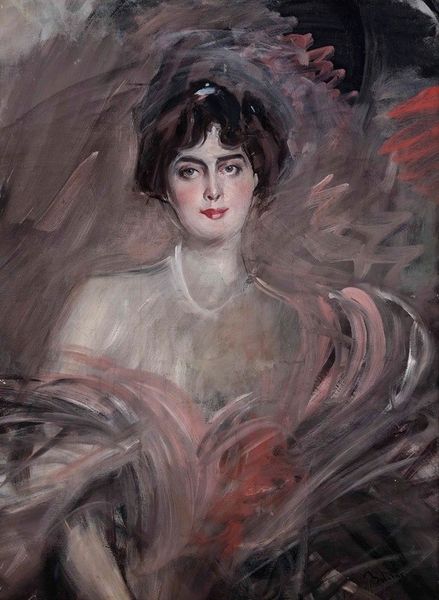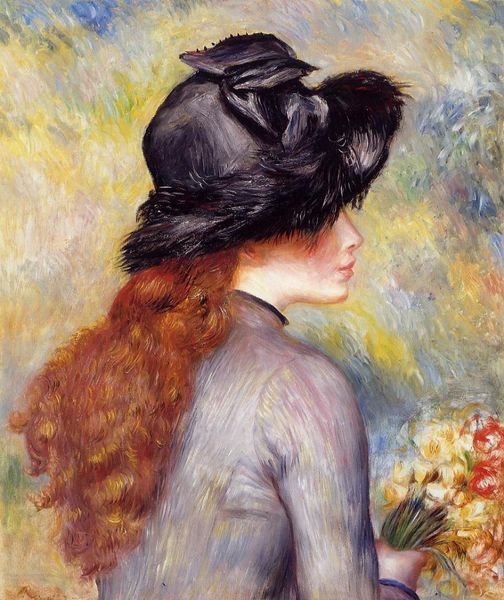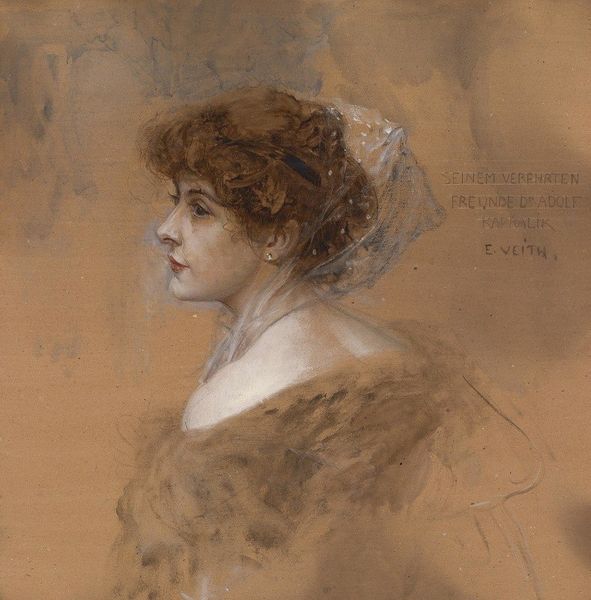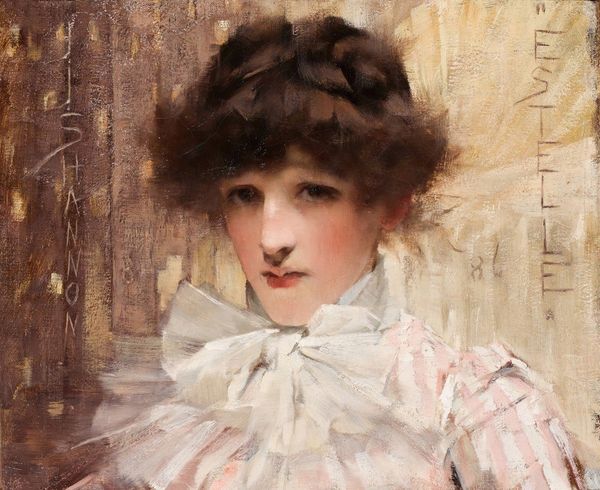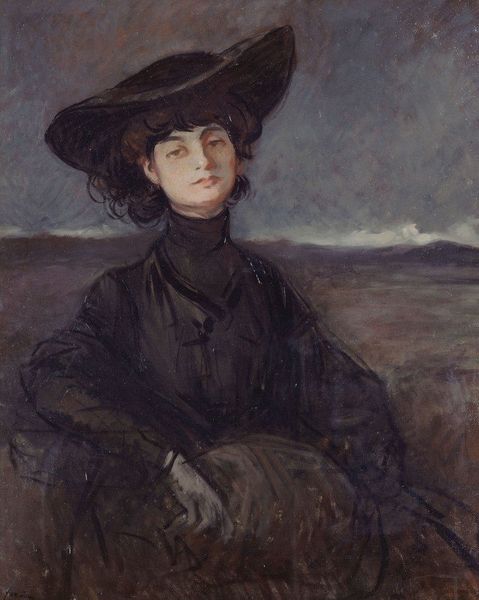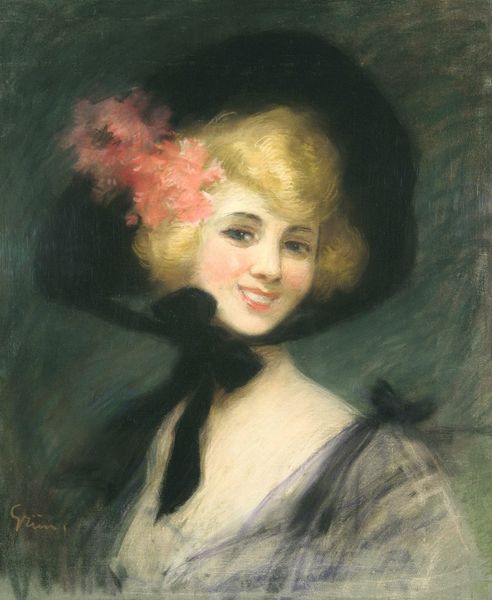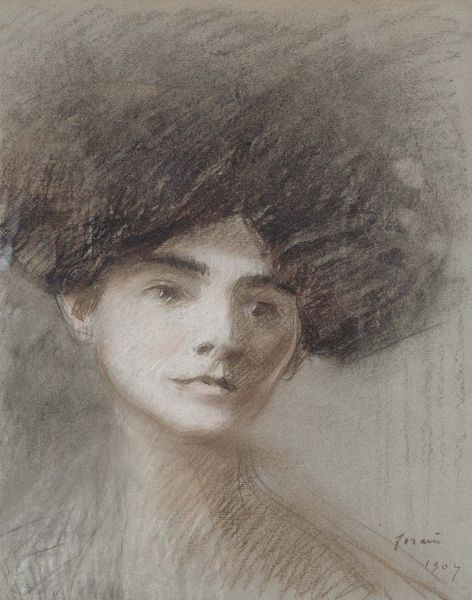
painting, oil-paint
#
portrait
#
painting
#
impressionism
#
oil-paint
#
figuration
#
romanticism
Dimensions: 38.1 x 62.2 cm
Copyright: Public domain
Editor: This is Giovanni Boldini's "Lady with a Black Hat", an oil painting. The mood is quite mysterious, almost melancholic, because of the dark tones. What do you see in this piece? Curator: I see a deliberate construction of femininity, veiled yet exposed. Consider the era, likely the late 19th or early 20th century. The "lady" is shrouded, the hat a symbol of social standing, a visual gatekeeper. Yet, Boldini's impressionistic brushstrokes also seem to rebel against such strictures, don't they? The very texture seems to whisper of repressed desires, of a social performance demanded of women. What kind of narrative does this provoke? Editor: So, you see a tension between social expectations and personal expression? I hadn’t thought of it that way. I focused more on the surface. Curator: Precisely! Think about the politics of portraiture itself. Who gets depicted, and how? What societal forces are at play in constructing and limiting their identity? The veil, for example, could signify mourning but might equally imply concealment, a strategic deployment of the self. It is not enough to think in binary ways like good/evil, or truth/lie. Editor: That's such a richer reading than just "pretty lady". Now the hat feels less like decoration and more like a... shield, or a mask? Curator: Yes, exactly. The painting then becomes a record, not of a specific woman necessarily, but of womanhood constrained. Considering the period, with emerging feminist movements, how might the woman in this portrait situate herself within a patriarchal framework? What does the painting seem to communicate? Editor: Wow. I see it now, how it is not just about the beauty of the woman, but all the complex layers underneath! Curator: These are the historical conversations we need to have. Now, how can we take these ideas of constructed identity into our own time, to challenge similar constraints of gender, race, and class that persist today?
Comments
No comments
Be the first to comment and join the conversation on the ultimate creative platform.

